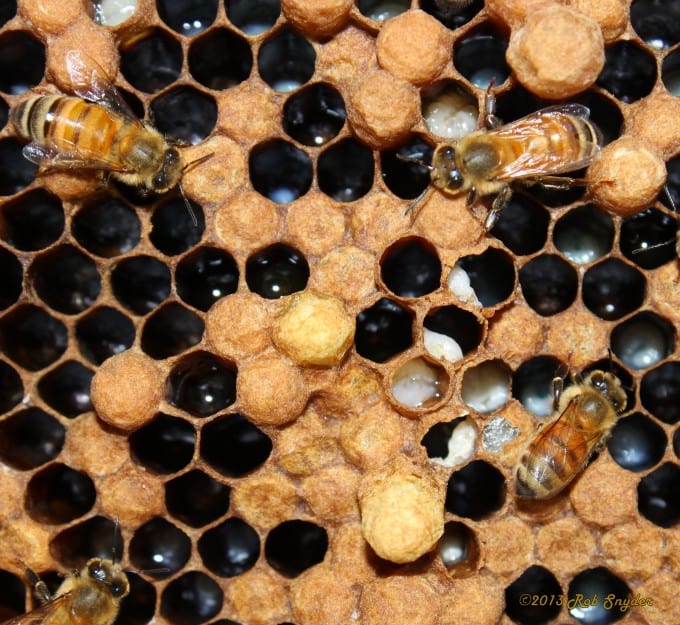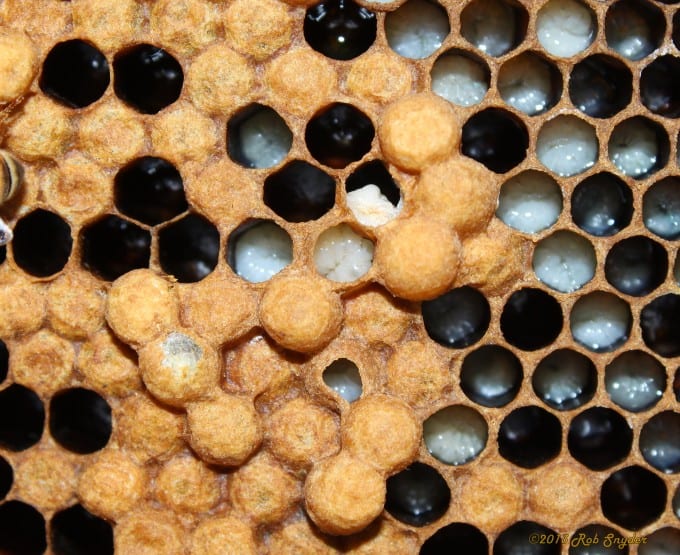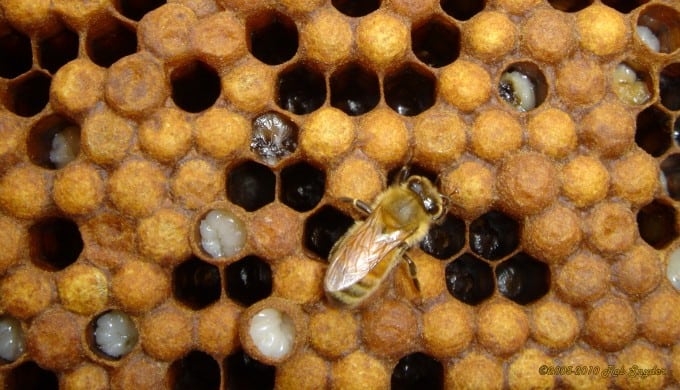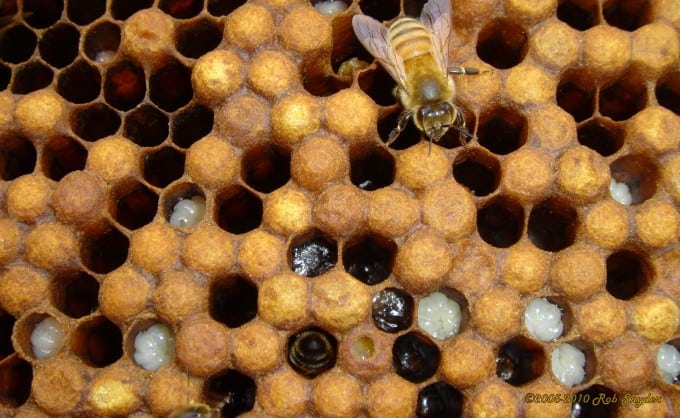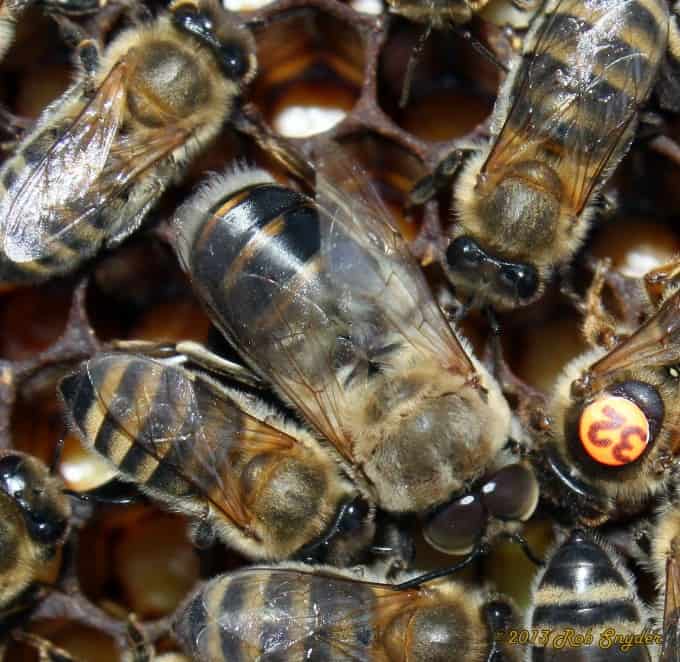
Throughout the year several honey bee diseases can be noted in stressed or sick colonies. There are also other stress factors that cause colony conditions to deteriorate and look very similar to sick or diseased colonies. One condition is neglected drone brood. It is caused by either a drone laying queen, laying workers, poorly mated queens, or failing queens. The size of the colony will determine how long it takes to dwindle down and show signs of neglected drone brood. Most of the photos are from a colony that had a poorly mated queen. The symptoms appeared 10 days after she started to lay. In a normal sized colony it would take some time for the colony to dwindle down to where the nurse bee cannot sufficiently feed larvae or maintain larvae due to lack of foragers bringing in food. This also disrupts the ventilation in the hive and you can start to see things like chalk brood show up in some cases. You may also note that there are malformed drones in large numbers depending on colony size. Supercedure cells or replacement cells may be present. These cells should be nicked out because they are probably drone.

So what does the brood look like? The sealed drone brood looks like a normal drone layer, but the open brood looks similar to EFB and the scale stage looks like AFB. This is due to brood starving then decomposing. The color goes from white to yellow to a brownish-black color. Sometimes it may appear to be a greyish color. The larvae can also die from the lack of ventilation from either overheating or chilling.
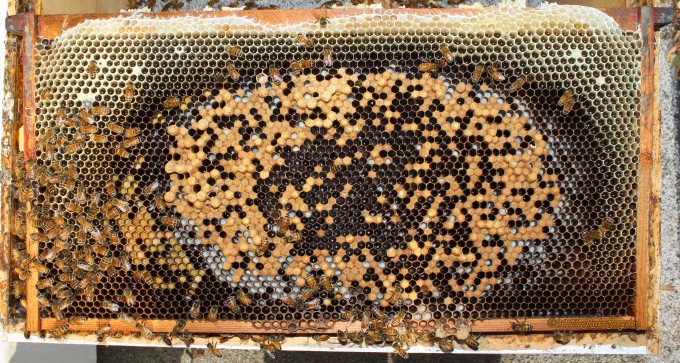
Recommended treatment for neglected drone brood depends on how bad the condition is. In many cases most of the equipment should be destroyed since a large percentage of worker cells have been transformed to drone cells. You can however scrape all remaining drone brood and place the frame into a strong colony and it may be fine.
Here are some images below to show you different colonies with neglected drone brood.
